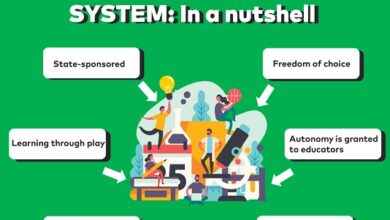Theory of multiple intelligences definition/Intelligences in learning
Theory of Multiple intelligences
Howard Gardner was a psychologist, researcher, and university professor who analyzed cognitive abilities and proposed in 1993 the theory of multiple intelligences. Gardner observed that traditional tests of intellectual awareness were only based on a single ability, only logic and language were measured, however, the brain has different ways of learning, preferences, or intelligence. The multiple intelligences method refers to a student-based philosophy that describes human intelligence as having multiple dimensions that must be recognized and developed in education. Theory of multiple intelligences definition
The role of the teacher is to direct students according to their goals, support students’ strengths, provide a rich learning mix, direct activities, choose tools that fit the job, and exercise all intelligences even when some can be exercised unconsciously. In addition, teachers are program developers, class designers and analysts, discoverers or inventors of multisensory activities within the realistic limits of time, space, and resources of the classroom and motivate them not only to develop second language learning but also to be collaborators in the general development of students’ intelligence.
The role of the students is to work alone or in pairs, they must carry out an inventory of multiple intelligences and develop their own profiles to know their intelligences and thus access the information of the contents of a class in a way to achieve intelligence has. Finally, students have the opportunity to go through a cycle of activities that expose different intelligences in the activities chosen and organized by the teacher. Theory of multiple intelligences definition
Intelligences in Learning Theory of multiple intelligences definition
Gardner proposes eight intelligences that are described below:
1-Linguistics
the ability to use language in special and creative ways, for example, this intelligence can be found in lawyers, writers, editors, and interpreters.
2-Logic-mathematics
the ability to think rationally often found in doctors, engineers, programmers, and scientists.
3-Spatial
the ability to form mental models of the world, for example, this intelligence is possessed by architects, decorators, sculptors, and painters. Theory of multiple intelligences definition
4-Musical
this intelligence refers to people who have a good ear for music, for example, singers and composers.
5-Body-kinesthetic
refers to people who have good body coordination, for example, athletes and craftsmen.
6-Interpersonal
this intelligence is about the ability to work with other people, for example, the people who may possess this intelligence are salespeople, politicians, and teachers.
7-Intrapersonal
this intelligence refers to the ability to understand oneself and apply one’s talent with good results, this intelligence is produced by happy and well-adapted people in all areas of life.
8-Naturalist Theory of multiple intelligences definition
this intelligence is based on the ability to understand and organize the patterns of nature.
Teacher role
It is up to the student to know to determine which intelligences he possesses with more strength. At IM, there is no prescribed program, rather the class is intended to be a support center for student self-learning, focused on the student’s goals and interests.
Because the MI method is designed for different types of classrooms, applications have been found more focused on the figure of the teacher than others, but in any case, the teacher must be the facilitator of learning. For example, the classroom may have 8 autonomous learning corners configured by the teacher for each intelligence. Theory of multiple intelligences definition
He can also individualize learning projects through project work, which in turn can be selected by him or by students. The teacher must design projects that are based on the different intelligences and that stimulate them.
Other applications are given through activities organized entirely by the teacher, which reveal the different intelligences.
Student role
It is established that there is a basic evolutionary sequence that is composed of 4 stages:
Awaken intelligence through multisensory experiences sensitize the student to the world around him.
Expand intelligence. Students present objects and experiences of their own choice, defining their properties and contexts.
Teaching with/for intelligence: intelligence is linked to the class topic, through worksheets, projects or small group discussions
Transfer intelligence: students reflect on the three previous experiences to relate learning to reality outside the class. Theory of multiple intelligences definition
Students have the freedom to choose topics and even design their own learning projects.
Presence of grammar
The sources consulted about this approach do not refer to grammar, perhaps because this is a general teaching method and not specific for language teaching. Like the community learning that will be discussed below, it is supported by psychology rather than linguistics.
Example of activity.
Level: A2
Goals
Describe places and people.
Present some content using the verbs in the present indicative
Talk about tastes and preferences.
The proposed activity is focused on musical intelligence and to a lesser degree on linguistics, naturalistic and interpersonal.
The teacher presents a series of photographs of Costa Rica that must be previously selected relative to natural resources, typical foods, or other aspects of Costa Rican culture.
The teacher tells the student that they can be inspired by one or more of the images that were presented or by any other topic about Costa Rica that catches their attention or is interested in highlighting. You can work alone, in pairs or in a group. Theory of multiple intelligences definition
Indication
Pick a song that you like, be it in your native language, that of one of your classmates, or in Spanish. Compose an alternative version or “cover” to describe Costa Rica, expose its strengths and weaknesses, what you like and what you don’t like.
